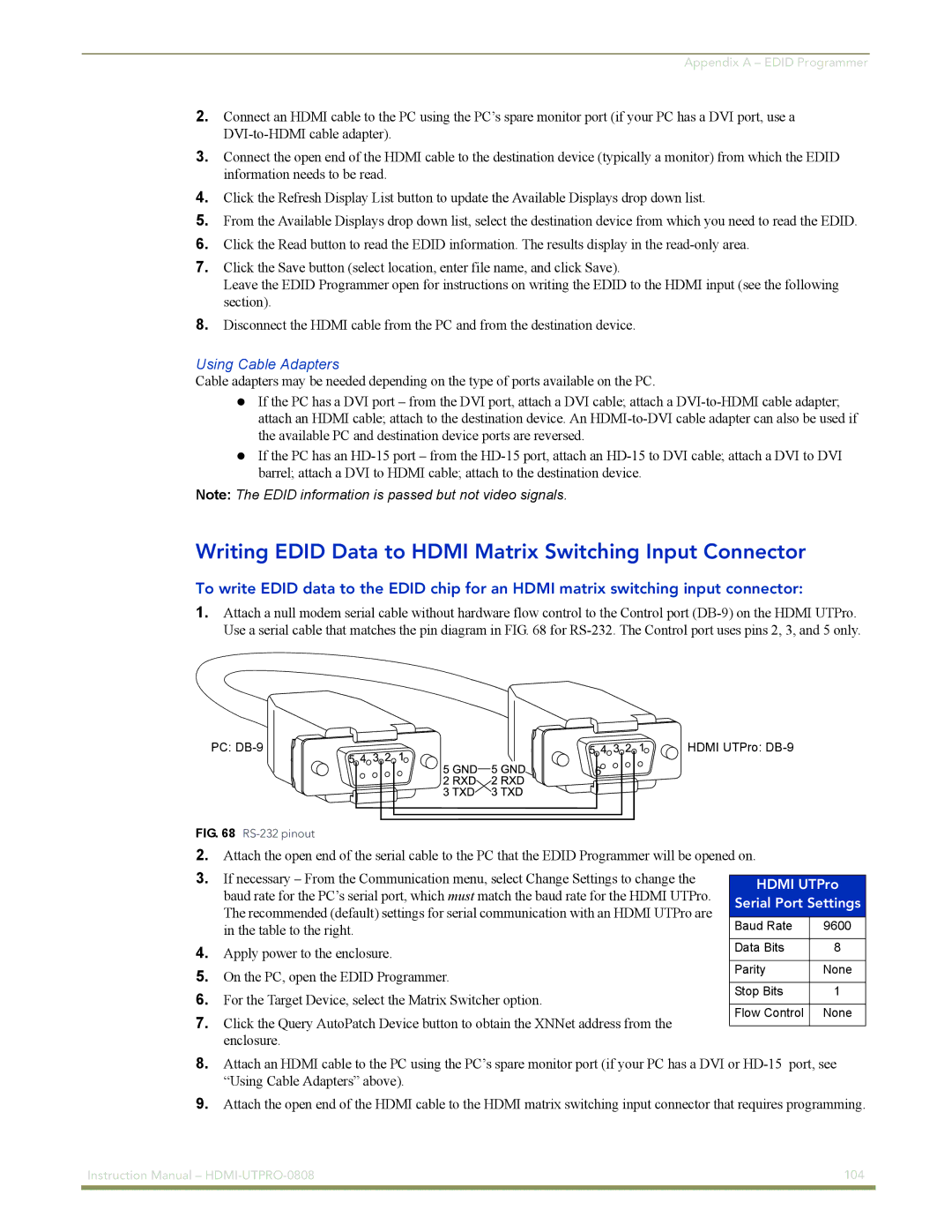
Appendix A – EDID Programmer
2.Connect an HDMI cable to the PC using the PC’s spare monitor port (if your PC has a DVI port, use a
3.Connect the open end of the HDMI cable to the destination device (typically a monitor) from which the EDID information needs to be read.
4.Click the Refresh Display List button to update the Available Displays drop down list.
5.From the Available Displays drop down list, select the destination device from which you need to read the EDID.
6.Click the Read button to read the EDID information. The results display in the
7.Click the Save button (select location, enter file name, and click Save).
Leave the EDID Programmer open for instructions on writing the EDID to the HDMI input (see the following section).
8.Disconnect the HDMI cable from the PC and from the destination device.
Using Cable Adapters
Cable adapters may be needed depending on the type of ports available on the PC.
If the PC has a DVI port – from the DVI port, attach a DVI cable; attach a
If the PC has an
Note: The EDID information is passed but not video signals.
Writing EDID Data to HDMI Matrix Switching Input Connector
To write EDID data to the EDID chip for an HDMI matrix switching input connector:
1.Attach a null modem serial cable without hardware flow control to the Control port
PC:
FIG. 68 RS-232 pinout
HDMI UTPro:
2.Attach the open end of the serial cable to the PC that the EDID Programmer will be opened on.
3. | If necessary – From the Communication menu, select Change Settings to change the |
|
| |
HDMI UTPro | ||||
| baud rate for the PC’s serial port, which must match the baud rate for the HDMI UTPro. | Serial Port Settings | ||
| The recommended (default) settings for serial communication with an HDMI UTPro are | |||
|
|
| ||
| in the table to the right. | Baud Rate | 9600 | |
4. | Apply power to the enclosure. | Data Bits | 8 | |
5. | On the PC, open the EDID Programmer. | Parity | None | |
|
| |||
6. | For the Target Device, select the Matrix Switcher option. | Stop Bits | 1 | |
|
| |||
Flow Control | None | |||
7. | Click the Query AutoPatch Device button to obtain the XNNet address from the | |||
|
| |||
|
| |||
enclosure.
8. Attach an HDMI cable to the PC using the PC’s spare monitor port (if your PC has a DVI or
9. Attach the open end of the HDMI cable to the HDMI matrix switching input connector that requires programming.
Instruction Manual – | 104 |
|
|
